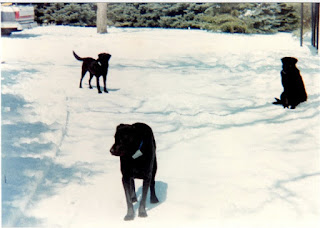In late January 2020, before COVID-19, I was fortunate to be able to see the Monet exhibit at the Denver Art Museum (DAM).
The details of the exhibit are outlined below in this article by the DAM.
Begin quote:
Now Closed: October 21, 2019–Feb 2, 2020
Denver Art Museum - Hamilton Building
Sold out
THIS EXHIBITION IS SOLD OUT.
The Denver Art Museum is home to the most comprehensive U.S. exhibition of Monet paintings in more than two decades. Claude Monet: The Truth of Nature features more than 120 paintings spanning Monet’s entire career and focuses on the celebrated French Impressionist artist’s enduring relationship with nature and his response to the varied and distinct places in which he worked.
Monet traveled more extensively than any other Impressionist artist in search of new motifs. His journeys to varied places including the rugged Normandy coast, the sunny Mediterranean, London, the Netherlands, and Norway inspired artworks that will be featured in the presentation. This exhibition uncovers Monet’s continuous dialogue with nature and its places through a thematic and chronological arrangement, from the first examples of artworks still indebted to the landscape tradition to the revolutionary compositions and series of his late years.
Claude Monet: The Truth of Nature explores Monet’s continuous interest in capturing the quickly changing atmospheres, the reflective qualities of water, and the effects of light, aspects that increasingly led him to work on multiple canvases at once. Additionally, the exhibition examines the critical shift in Monet’s painting when he began to focus on series of the same subject, including artworks from his series of Haystacks, Poplars, Waterloo Bridge, and Waterlilies.
Claude Monet: The Truth of Nature also delves into the artist’s increasing abandonment of any human presence in the landscapes he created, a testimony to his commitment to isolate himself in nature. This creative process simultaneously established an intimacy with his subject, which culminated later in Giverny, where he created his own motif through meticulous planning, planting, and nurturing of his flowers and plants, which he then translated onto the canvas.
This exhibition is organized and curated by Angelica Daneo, the DAM’s Chief Curator and curator of European art before 1900, Christoph Heinrich, Frederick and Jan Mayer Director of the DAM, and Museum Barberini Director Ortrud Westheider. Major lenders include the Musée d'Orsay, Paris; Musée Marmottan Monet, Paris; Museum of Fine Arts, Boston; The Art Institute of Chicago; and the Metropolitan Museum of Art, New York. A catalog accompanying the exhibition, and published by Prestel Publishing, includes essays by renowned scholars, including Marianne Mathieu, James Rubin, George T.M. Shackelford, Richard Thomson, and Paul Hayes Tucker, among others. The publication is available in The Shop at the Denver Art Museum and through the online shop. Co-organized by the DAM and the Museum Barberini in Potsdam, Germany, Denver is the sole U.S. venue for this presentation.
End quote:
The following link is a YouTube video by the DAM which gives an overview of the exhibit in a somewhat spirited way and shows scenes of the gallery spaces and typical crowds that my photos missed.
The following movie/videos are made from my photos at the exhibit. It was very crowded and at most times very difficult to get a “straight-on” view of the paintings for a photo. Some of his paintings even have SHADOWS! I only photographed about 40+ of the over 120 paintings on display.
The following photos are of informational displays throughout the exhibit that to me were very enlightening.
As part of the exhibit, viewers could carry audio equipment that described each photo based on the posted numbers, with separate audios for adults or “kids”.
MyShadow for this post was taken recently as I walked early in the morning, hence the long shadow as the sun was rising and also enhanced by the ground sloping down from the State Capitol sidewalk.
Thanks for viewing this post!
















